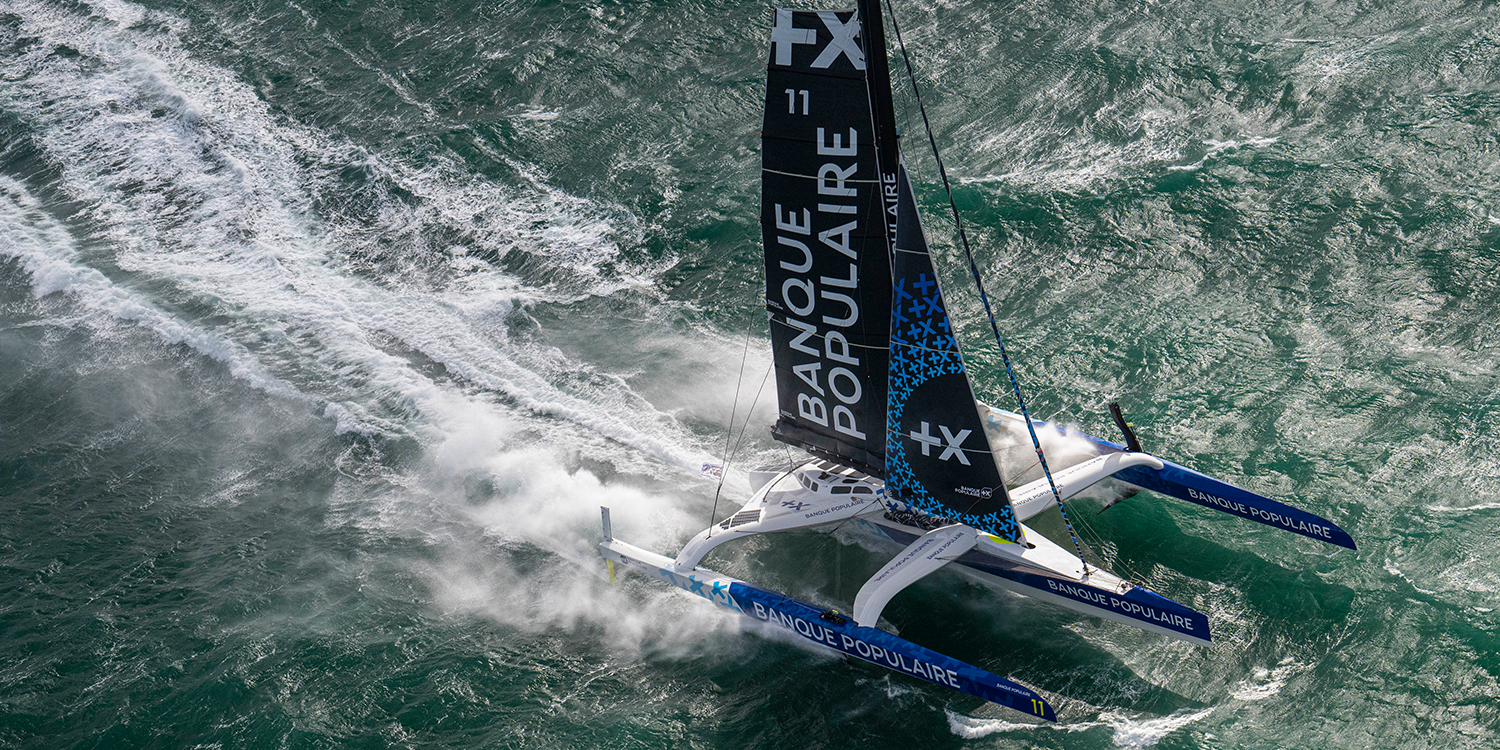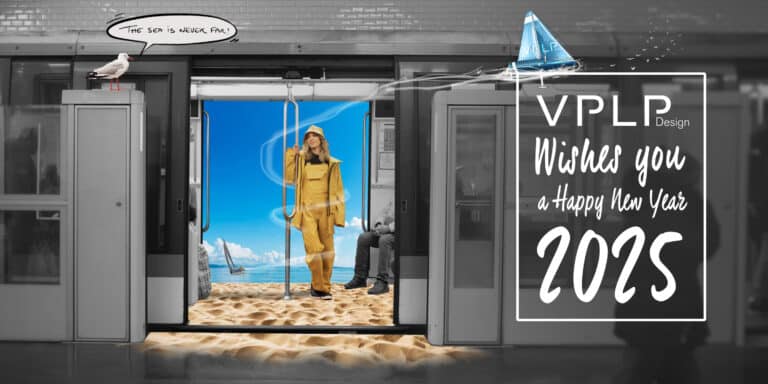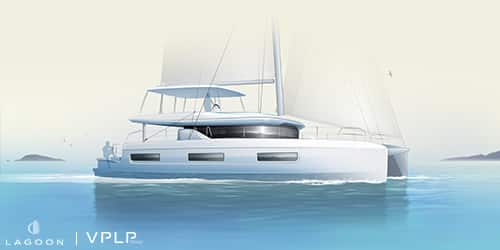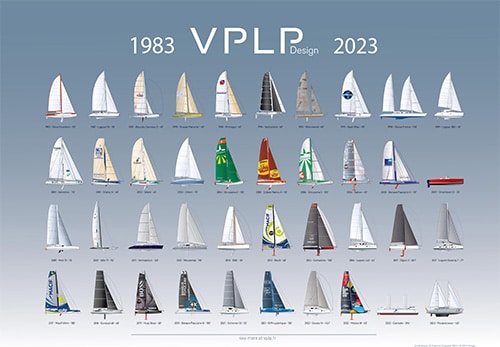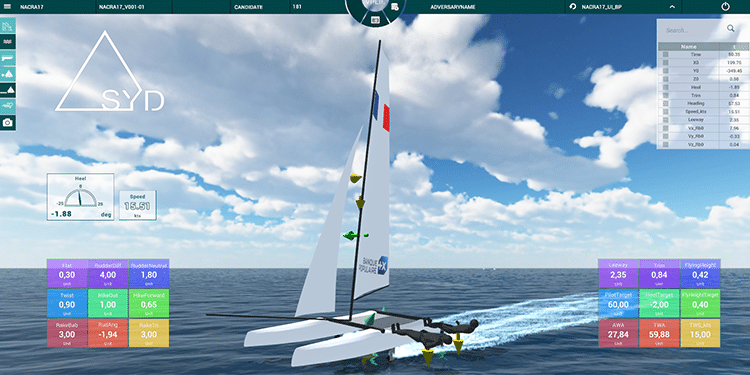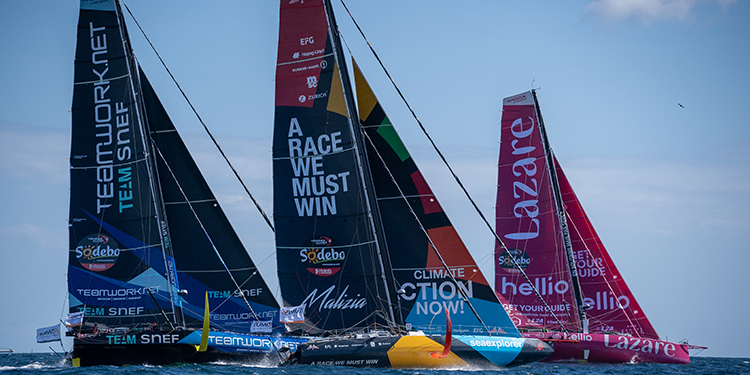Following the 16th edition of the Transat Jacques Vabre Normandie–Le Havre, Xavier Guilbaud joined the crew of SVR Lazartigue for the return trip to Concarneau. VPLP Design’s partner naval architect talks about this two-handed transatlantic crossing and gives his assessment of the Arkea Ultim Challenge–Brest, the first solo round-the-world race for Ultims which starts out from Brest on 7 January.
In addition to the top spots on the podium for Banque Populaire XI and SVR Lazartigue, two boats designed by VPLP Design, what else caught your attention in this year’s Transat Jacques-Vabre?
Most importantly, like last year’s Route du Rhum, all the boats made it to the finishing line. It’s really satisfying for us and for this class which is now realizing its full potential. The boats have achieved the level of reliability we had been hoping for in the last few years. Nevertheless, the trimarans are still vulnerable to UFOs [unidentified floating objects] and three of the five boats were affected. We also discovered that, in a class dominated these last three years by Maxi Edmond de Rothschild, performances have become much more uniform. This huge progress is the fruit of the continuous development on the appendages since the boats went into the water, as well as the hours and hours of training and work put in by the crews. Above all, I think Banque Populaire XIhas impressed everyone. Sailing the boats is the best way to progress!
Given the forecasts of the VPP (velocity prediction program), were you surprised by the boats’ performances?
Yes and no! The way SVR Lazartigue managed to close the gap with Banque Populaire XI between the doldrums and Ascension Island wasn’t much of a surprise. A couple of years ago the boat showed itself to be very comfortable in these pre-flight conditions, both on the wind and reaching, and with the simulator we observed a difference of one or two knots between the boats. On the other hand we knew that Banque Populaire XI would be comfortable reaching in a breeze, but we didn’t expect her to have such an advantage on the last leg. In that respect, her performance exceeded the theory. Armel [Le Cléac’h] and Sébastien [Josse] managed to find trim combinations that gave them something extra.
And yet SVR Lazartigue, the lightest Ultim of her generation which benefited from extensive aerodynamic research, didn’t dominate on a reach. How do you explain that?
Well for a start you have to understand that aerodynamics and weight aren’t everything, and it’s not necessarily on a reach that these two parameters will have the greatest impact on performance. Indeed, appendages also play a predominant role, in particular the geometry of the foils, the latter being very different in design. When it comes to appendages, we are always looking for a compromise between minimal drag and auto-stability in rough seas. But we didn’t go for the same compromise on these two boats. Sail trimming and helmsmanship are also important considerations. Unfortunately we had very little opportunity for reaching on our return passage, so we didn’t get the chance to test the new sail configurations. I’m convinced that the boat still has potential for improvement in this area, but that will require time on the water to test the configurations.
Why was it important for you to be part of the return crew?
The return passage allowed me to spend six days aboard and really experience the boat. I learnt a lot, in particular concerning SVR Lazartigue’s intrinsic performance on the open seas, but also about the ergonomics of the cockpit and the deck, and of course what it’s like living on the boat. It really was a great opportunity to bridge the divide between theory and reality, to get a feel for the boat, to better understand how she behaves at sea and how she enters the water. You can imagine a lot of things when you’re sitting at the computer, but it’s completely different when you experience the boat on the water! I spent a lot of time talking with Tom and the crew about trimming and the future development of the boat. As a naval architect it adds to the experience because, even though I’m not a professional sailor, we talk more or less the same language and that facilitates our discussions back on dry land.
“Everyone wants to see a real
contest on a worldwide scale”
What is your initial assessment of Actual Ultim 3’s new foils?
Compared to the winning three Ultims, there’s always a delta linked to the length [30 metres long for a 22-metre beam compared with 32 x 23 for the latest Ultims] and the structure of the vessel which limits the size of its appendages. With the new foils, we have reached a maximum in terms of the stresses Actual Ultim 3 can withstand. The crew had a great race and got 100% out of their machine. I found Anthony [Marchand] to be very relaxed when I met him at the finishing line, which bodes well for the forthcoming circumnavigation.
Do you think the Arkea Ultim Challenge–Brest will be as tightly fought as the Transat Jacques Vabre?
Yes, no doubt about it! On paper the crews have improved immeasurably, the vessels are reliable, and I think everyone wants to see a real contest on a worldwide scale. What we don’t have any control over are the UFOs which can damage the boats. But even in downgraded mode the Ultims are capable of producing phenomenal speeds! On a round-the-world race there can be runaway leaders and come-from-behind winners, and you also have to factor in port visits [which are allowed but the boat must be port-bound for at least 24 hours].
Considering the stakes, do you expect a really intense pace or a more prudent style of sailing?
Ultims can go fast very easily, even when reefing. That’s their strength. They can go very fast without creating stress or damaging themselves, it’s something you realize once you have sailed one. These boats are much more comfortable and forgiving than the trimarans of fifteen years ago which could capsize at any moment. Of course they are fast, noisy and bounce all over the place but you can feel that the boats are sound. And even if there are only six taking the starting line, it’s going to be competitive. Knowing the characters aboard, nobody is going to give an inch and they are all front runners. The atmosphere’s going to be intense because the skippers are determined, prepared to give it all they’ve got to get a place on the podium in a unique race which, whatever the outcome, will go down in history. February can’t come soon enough!
Lastly, can you give us the latest on SVR Lazartigue which had to come out of the water for repairs to her forward beam?
Subsequent to her return trip from Martinique, ultrasound scans revealed that the forward beam on starboard was showing signs of weakness. We immediately convened a meeting with the teams at MerConcept, CDK and GSea Design to analyse the situation and start repairs. It’s going to be a real race against the clock but we’re confident that Tom [Laperche] will be at the Brest starting line alongside his five rivals on 7 January.
